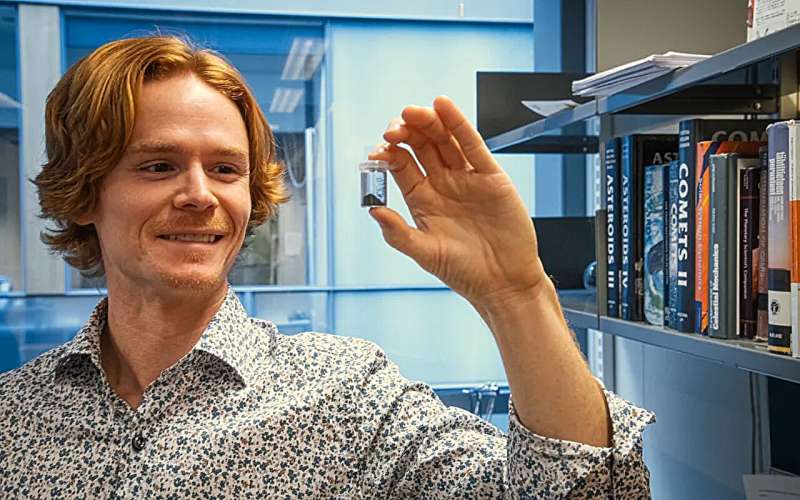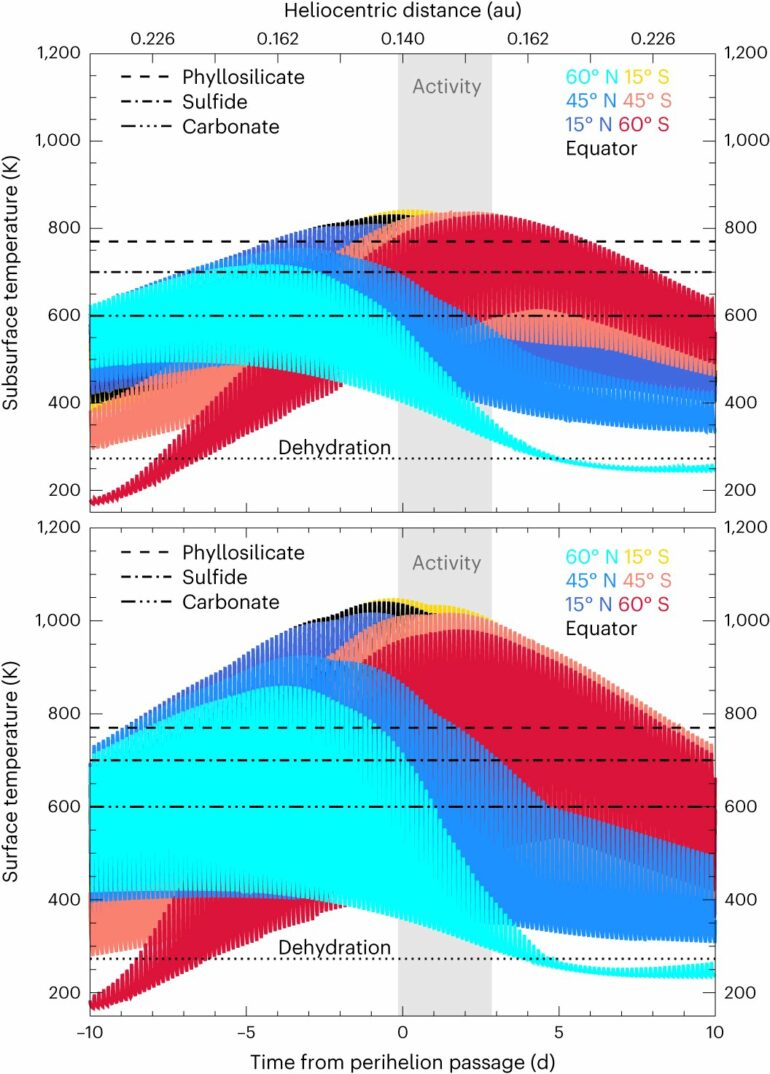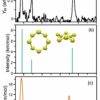Asteroid Phaethon, which is five kilometers in diameter, has been puzzling researchers for a long time. A comet-like tail is visible for a few days when the asteroid passes closest to the sun during its orbit.
However, the tails of comets are usually formed by vaporizing ice and carbon dioxide, which cannot explain this tail. The tail should be visible already at Jupiter’s distance from the sun.
When the surface layer of an asteroid breaks up, the detached gravel and dust continue to travel in the same orbit and give birth to a cluster of shooting stars when it encounters the Earth. Phaethon causes the Geminid meteor shower, which also appears in the skies of Finland every year around mid-December. At least according to the prevailing hypothesis because that’s when the Earth crosses the asteroid’s path.
Until now, theories about what happens on Phaethon’s surface near the sun have remained purely hypothetical. What comes off the asteroid? How? The answer to the riddle was found by understanding the composition of Phaethon.
A rare meteorite group consisting of six known meteorites
In a recent study published in the journal Nature Astronomy by researchers from the University of Helsinki, the infrared spectrum of Phaethon previously measured by NASA’s Spitzer space telescope is re-analyzed and compared to infrared spectra of meteorites measured in laboratories.
The researchers found that Phaethon’s spectrum corresponds exactly to a certain type of meteorite, the so-called CY carbonaceous chondrite. It is a very rare type of meteorite, of which only six specimens are known.
Asteroids can also be studied by retrieving samples from space, but meteorites can be studied without expensive space missions. Asteroids Ryugu and Bennu, the targets of recent JAXA and NASA sample-return missions, belong to CI and CM meteorites.
All three types of meteorites originate from the birth of the solar system, and partially resemble each other, but only the CY group shows signs of drying and thermal decomposition due to recent heating.
All three groups show signs of a change that occurred during the early evolution of the solar system, where water combines with other molecules to form phyllosilicate and carbonate minerals. However, CY-type meteorites differ from others due to their high iron sulfide content, which suggests their own origin.

Postdoctoral Researcher Eric MacLennan holds in his hands a very rare type of meteorite, the so-called CY carbonaceous chondrite. Only six specimens of the same type are known. The sample is on loan from the Natural History Museum in London. © Susan Heikkinen
Phaethon’s spectrum matches the spectra of CY carbonaceous chondrites
Analysis of Phaethon’s infrared spectrum showed that the asteroid was composed of at least olivine, carbonates, iron sulfides, and oxide minerals. All of these minerals supported the connection to the CY meteorites, especially iron sulfide. The carbonates suggested changes in water content that fit the primitive composition, while the olivine is a product of thermal decomposition of phyllosilicates at extreme temperatures.
In the research, it was possible to show with thermal modeling what temperatures prevail on the surface of the asteroid and when certain minerals break down and release gases. When Phaethon passes close to the sun, its surface temperature rises to about 800°C. The CY meteorite group fits this well. At similar temperatures, carbonates produce carbon dioxide, phyllosilicates release water vapor and sulfides release sulfur gas.
According to the study, all the minerals identified on Phaethon appear to correspond to the minerals of CY-type meteorites. The only exceptions were the oxides portlandite and brucite, which were not detected in the meteorites. However, these minerals can form when carbonates are heated and destroyed in the presence of water vapor.
The tail and the meteor shower get an explanation
Asteroid composition and temperature explained the formation of gas near the sun, but do they also explain the dust and gravel forming the Geminid meteors? Did the asteroid have enough pressure to lift dust and rock from the surface of the asteroid?
The researchers used experimental data from other studies in conjunction with their thermal models, and, based on them, it was estimated that when the asteroid passes closest to the sun, gas is released from the mineral structure of the asteroid, which can cause the rock to break down. In addition, the pressure produced by carbon dioxide and water vapor is high enough to lift small dust particles from the surface of the asteroid.
“Sodium emission can explain the weak tail we observe near the sun, and thermal decomposition can explain how dust and gravel are released from Phaethon,” says the study’s lead author, postdoctoral researcher Eric MacLennan from the University of Helsinki.
“It was great to see how each one of the discovered minerals seemed to fall into place and also explain the behavior of the asteroid,” says associate professor Mikael Granvik from the University of Helsinki.
More information:
Eric MacLennan et al, Thermal decomposition as the activity driver of near-Earth asteroid (3200) Phaethon, Nature Astronomy (2023). DOI: 10.1038/s41550-023-02091-w
Provided by
University of Helsinki
Citation:
Research team describes the composition of asteroid Phaethon (2023, November 28)



